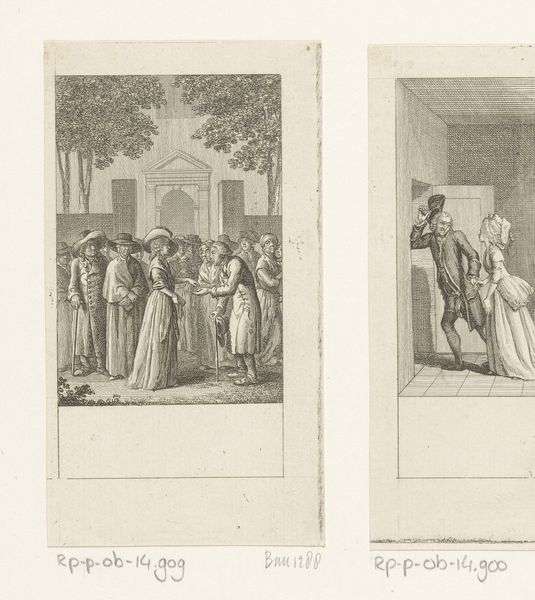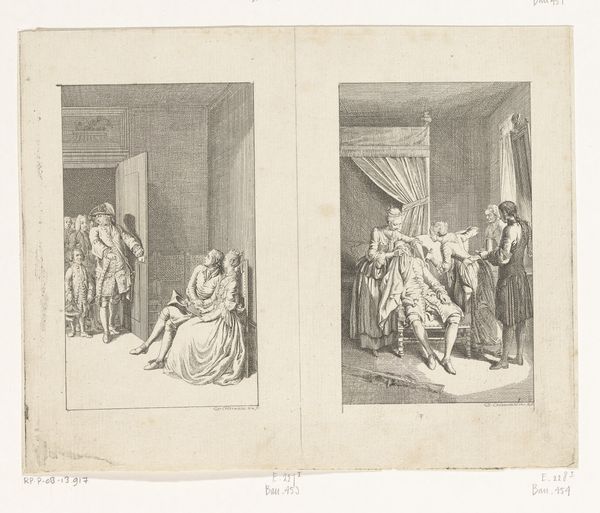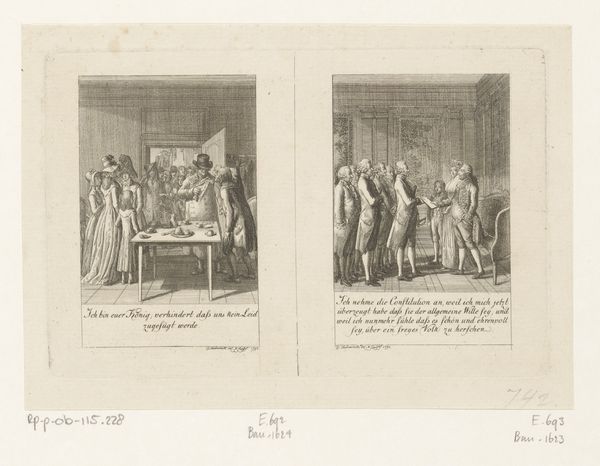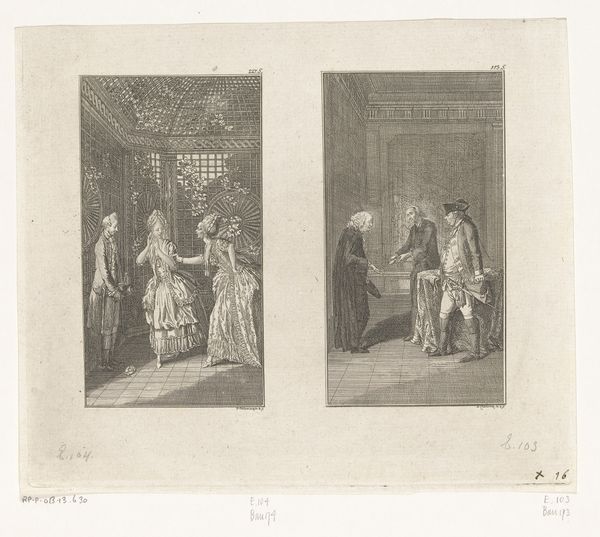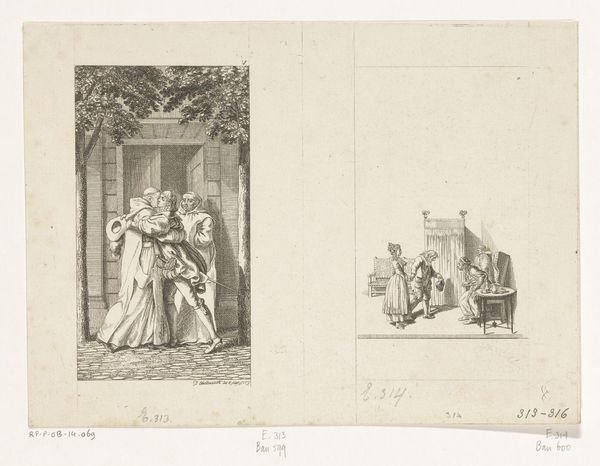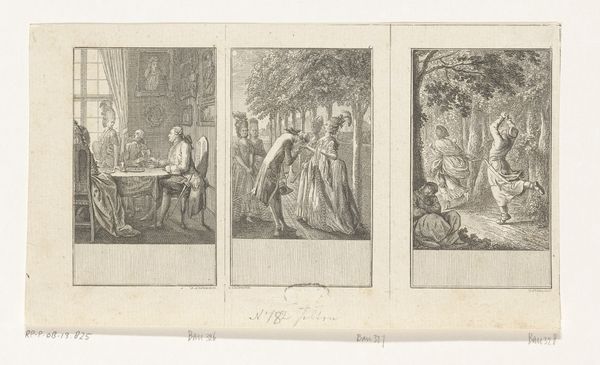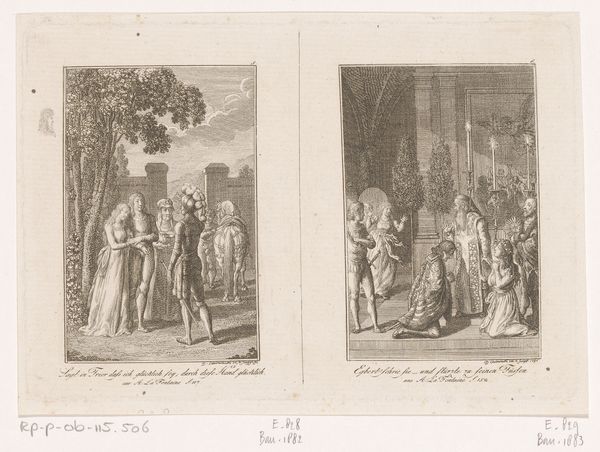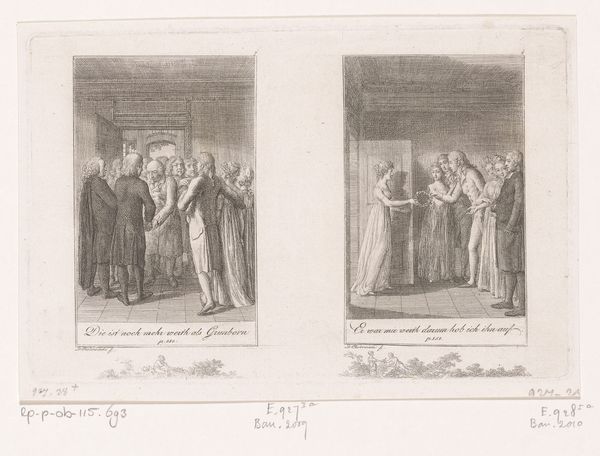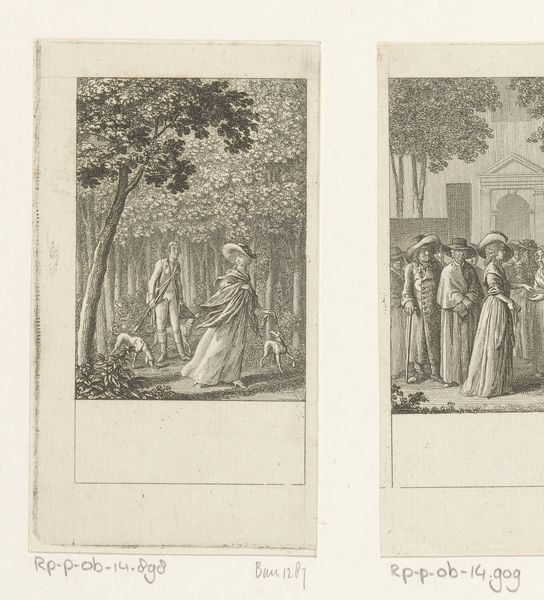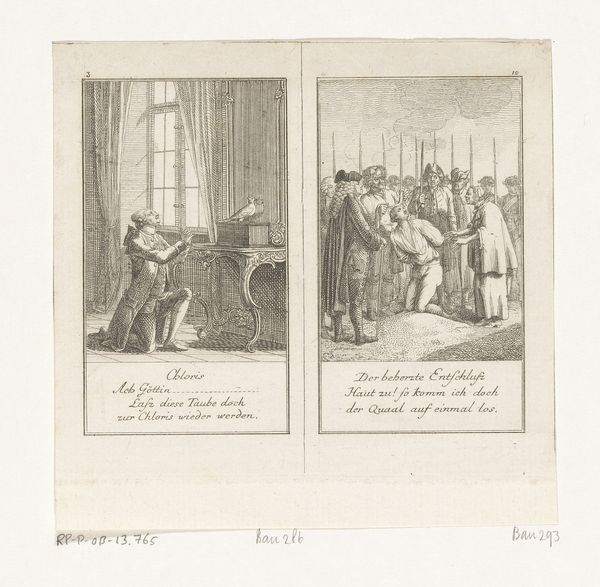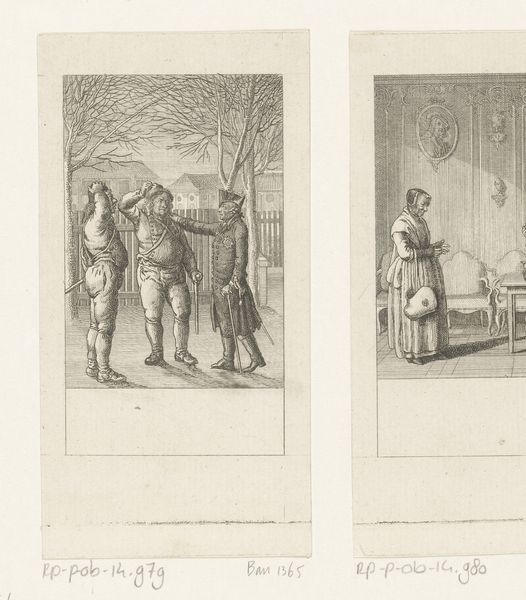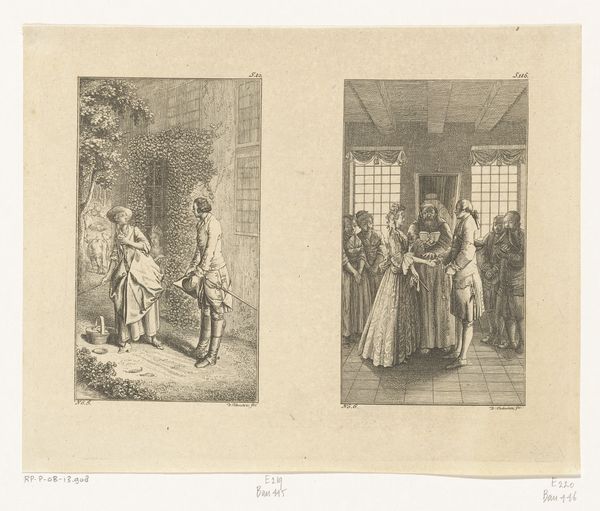
Twee scènes uit Leben, Bemerkungen und Meinungen Johann Bunkels 1778
0:00
0:00
danielnikolauschodowiecki
Rijksmuseum
Dimensions: height 163 mm, width 205 mm
Copyright: Rijks Museum: Open Domain
Curator: Here we have a print from 1778 by Daniel Nikolaus Chodowiecki titled, "Twee scènes uit Leben, Bemerkungen und Meinungen Johann Bunkels." It illustrates scenes from the book *Life and Opinions of Johann Bunkel.* Editor: It has a lighthearted quality to it. Both vignettes feature many figures, though they seem to have quite distinct energies. I immediately noticed the difference in settings – one outdoor, bustling with action and perhaps a bit of mischievous chaos; the other more orderly and contained within an interior. Curator: Indeed. Chodowiecki was a master of capturing social interactions. It's important to remember the rise of the novel at this time and the expanding middle class interested in such narratives. Prints like these served as a kind of visual literature, circulating stories and ideas. Editor: And we can’t overlook the technique. Look at the sheer density of lines in the foliage of the first scene compared to the controlled lines used to depict the ornate clothing and architecture inside. The tools required to create this engraving involved tremendous skill. Curator: Absolutely. The composition reinforces that distinction. The left scene's disorder implies movement and the embrace may suggest the tension that stems from transgression. It really makes you wonder exactly what’s happening! The interior scene offers an insight into formal ceremony, and, considering it's from a novel, perhaps this print visualizes how societal constraints influence narrative. Editor: The materiality of this work further connects it to its audience. The cheap proliferation of printed materials was transforming society itself, granting greater accessibility to both art and literacy. That had to affect artists such as Chodowiecki. It's easy to imagine this was more than a decorative piece for elite collections; the aim may have been to generate sales among a growing readership eager to consume imagery that mirrored their social realities. Curator: The work offers an insight into both the world within the story of Johann Bunkel and 18th-century German social life. Editor: Right. It's about recognizing that prints like this reflect more than the story, they highlight a change in production itself that would reverberate through all segments of culture.
Comments
No comments
Be the first to comment and join the conversation on the ultimate creative platform.

